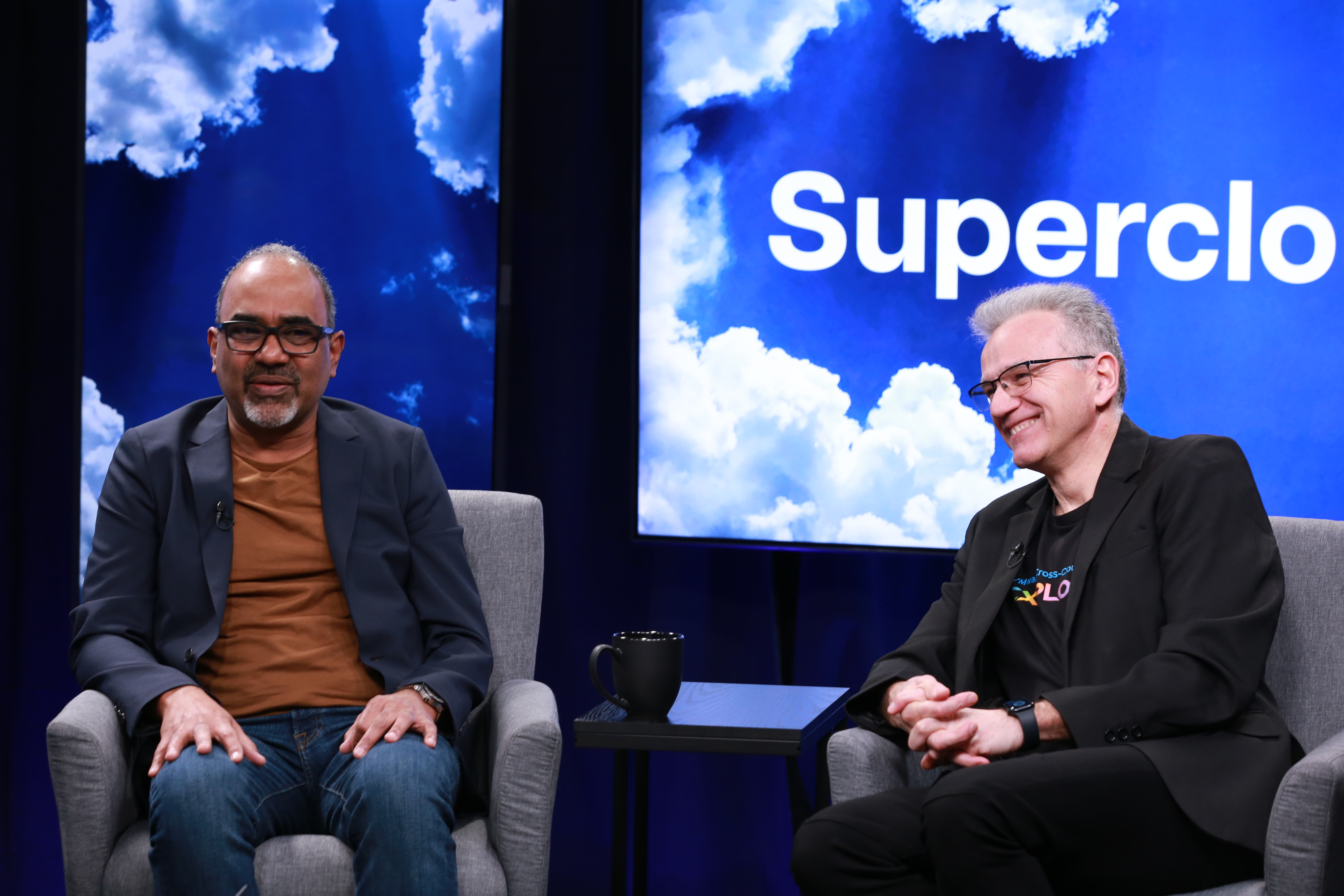 CLOUD
CLOUD
 CLOUD
CLOUD
 CLOUD
CLOUD
The developer role is invaluable to the modern enterprise’s digital-focused existence.
As masons of the global digital empire, another challenge has been brought to them: that of aiding in the realization of the supercloud.
“You want to keep them happy; you want to hug your developers,” said Sarbjeet Johal (pictured, left), cloud researcher and consultant. “The key, in the supercloud context, is that developers don’t mind mucking around with platforms or APIs or new languages, but they hate the infrastructure part. They don’t want to muck around with servers, and that’s a fact. They want programmability to the nth degree.”
Johal and Vittorio Viarengo (right), vice president of Cross-Cloud Services at VMware Inc., spoke with theCUBE industry analysts John Furrier and Dave Vellante at the Supercloud2 event, during an exclusive broadcast on theCUBE, SiliconANGLE Media’s livestreaming studio. They discussed the importance of developer buy-in for the computing cohesion required by the supercloud between disparate environments. (* Disclosure below.)
Developers have a part to play in any distributed computing paradigm, but given their working styles, they’ll contribute best only in an environment where complexities are abstracted away from their workflows. Thus, while the developers continue to deliver on one hand, it should mostly be the operations professionals at the helm of the supercloud paradigm, according to Viarengo.
“Now the operators are back in the private cloud trying to keep the backend system running, and so I think the supercloud is needed, at least initially, for the operators to get in front of the developers, fit in the workflow, but also lay the foundation so that it’s secure,” he said.
Developers commonly avoid the friction that comes with methods and tools that go outside of their knowledge base. Therefore, the supercloud must steer clear of proprietary architectures that diverge from what the developers already know, Viarengo added.
“I think we need to help them build an architecture, but it cannot be proprietary,” he said. “It has to be built on what works in the cloud. And so what works in the cloud today is Kubernetes and a number of different open-source projects that you need to enable and then provide.”
The role of platform/solutions vendors would be to create frictionless, cross-cloud environments wherein the developers can exercise their muscle memory owing to shared underpinnings across the board. Also, developers across disparate industry verticals aren’t cut from the same mold either and have to work with varying skill sets, approaches, performance parameters and constraints. This further illustrates the need to eliminate “broad stroking” while fabricating the supercloud, according to Johal.
“Developers are different in nature. They are given certain parameters to work with and certain constraints on the budget side,” he explained. “They are educated at different levels as well, so you cannot have the broad stroking of developers. We are talking about a citizen developer these days. On one extreme, that’s citizen developers. On the other is the professional developers.”
The definitions and differences between software engineering and development have blurred in recent years — to the point where they’re now used interchangeably. Understanding the nuanced differences between the two concepts, however, is crucial to analyzing how software will evolve as the supercloud takes hold. And the software engineers will have more say in creating the base-level foundations for the supercloud, according to Viarengo.
“I caught up with [tech vet] Adam Bosworth two weeks ago in New York, and I asked him, ‘What’s happening to these higher-level developers?’ He said that ChatGPT will get to a point where its high-level procedural logic will be written by computers,” he said. “And so we may not need as many at the high level, but we still need the engineers down there. The point is the operation needs to get in front of them.”
A real-life use case example for supercloud is Robert Bosch GmbH, a global technology powerhouse operating in a litany of product and solutions niches. But with its auto industry offerings, in particular, it has had to tune its infrastructure for uniformity on the customer-facing side while allowing them the flexibility of choice on the backend, Johal explained.
“All of [the customers] don’t want to go to AWS, so they want the choice on the back end. So whatever they [Bosch] cook in the middle has to work,” he said. “They have to sprinkle the data for the data sovereign side, because they have Chinese car makers also, for example.”
Here’s the complete video interview, part of SiliconANGLE’s and theCUBE’s coverage of Supercloud2:
(* Disclosure: This is an editorial segment. TheCUBE is a paid media partner for Supercloud2. Sponsors for theCUBE’s event coverage, including VMware, do not have editorial control over content on theCUBE or SiliconANGLE.)
THANK YOU